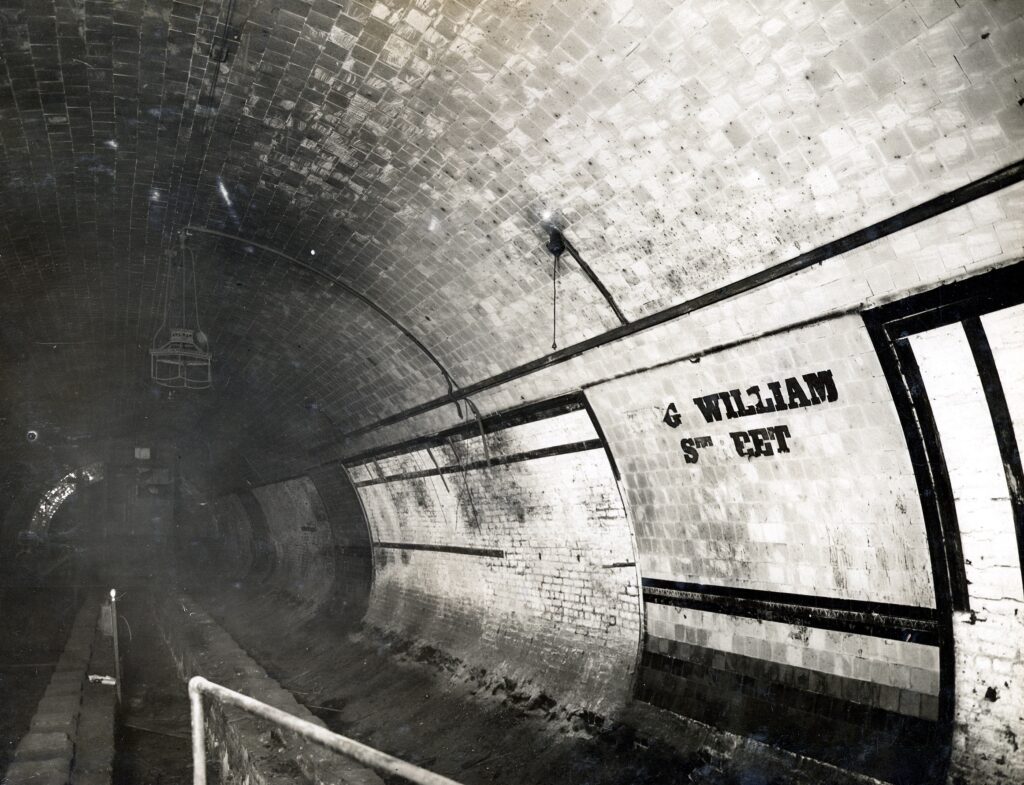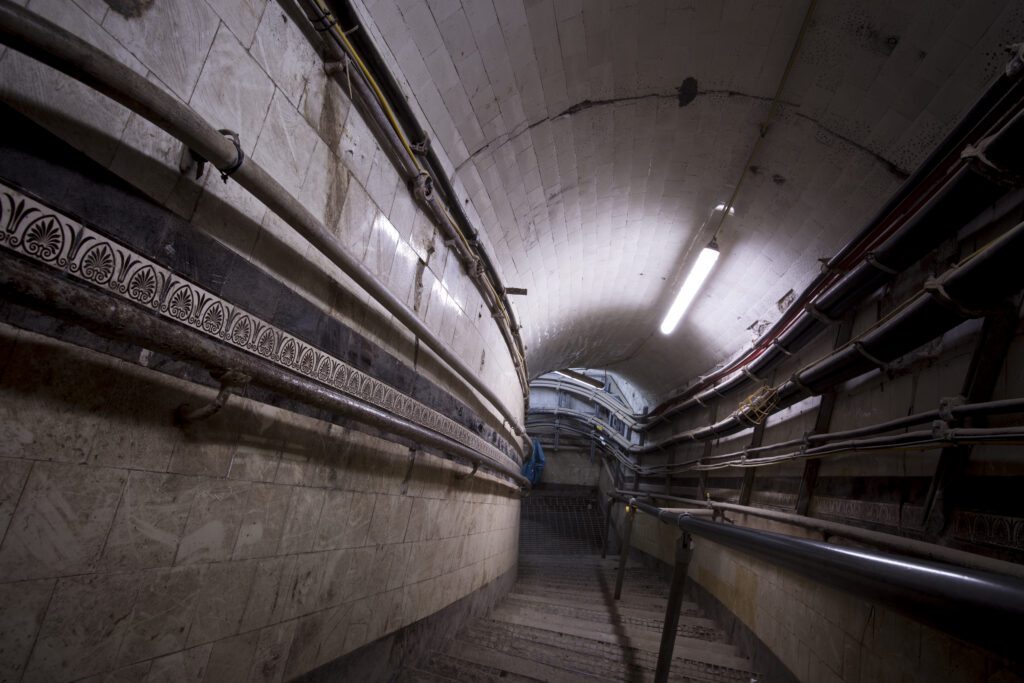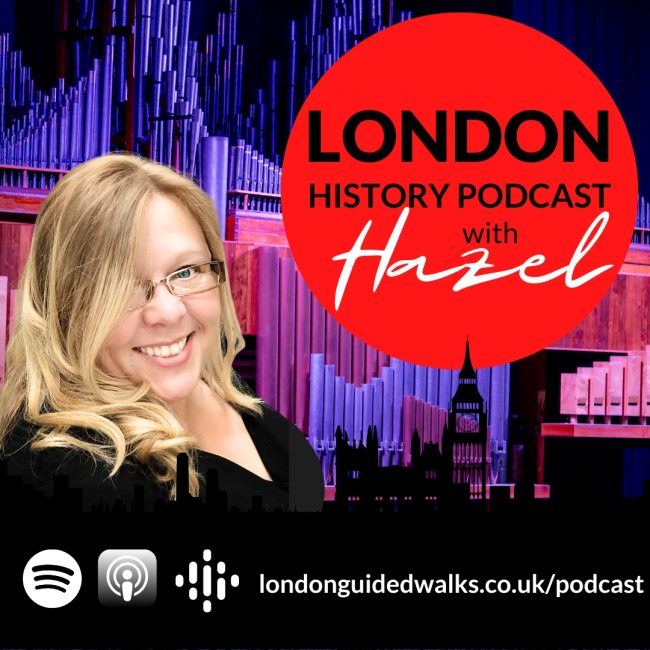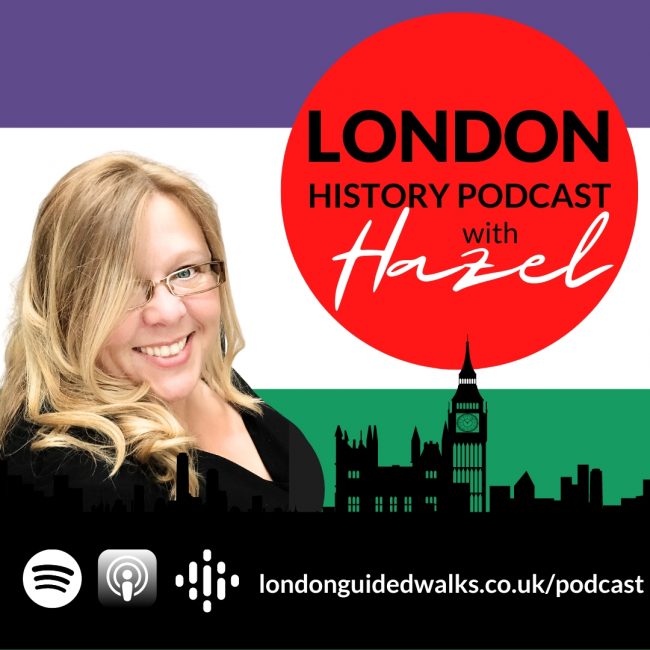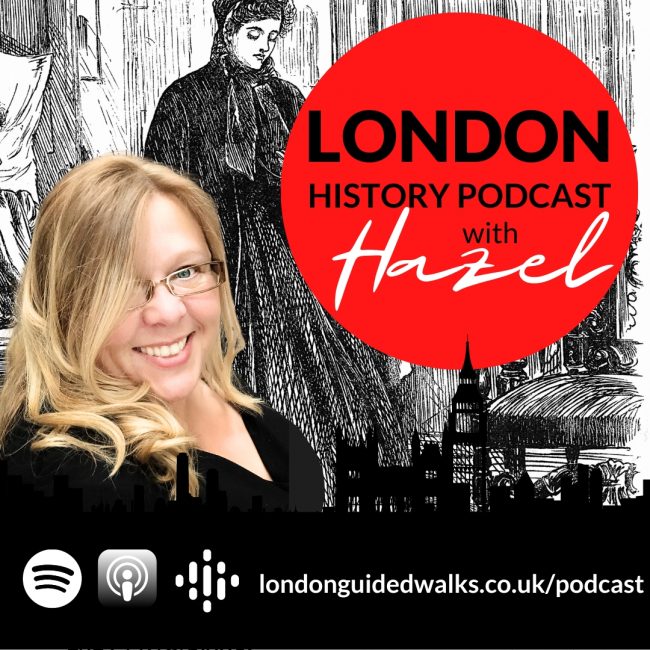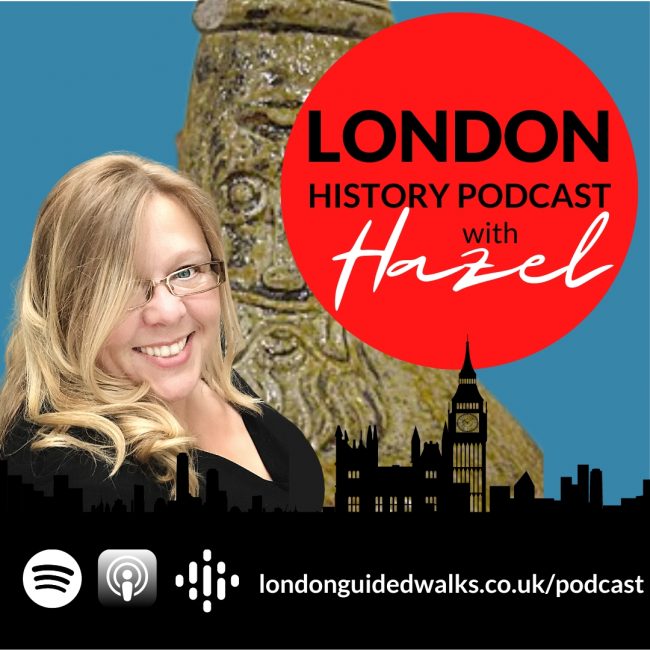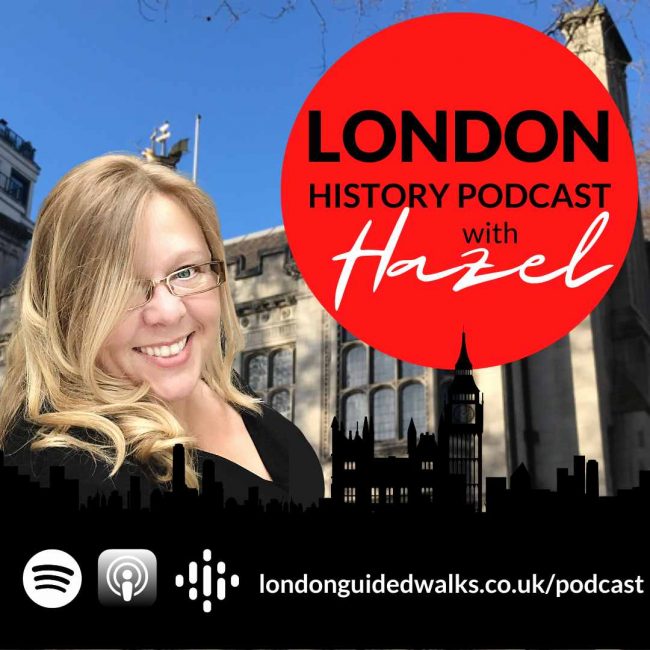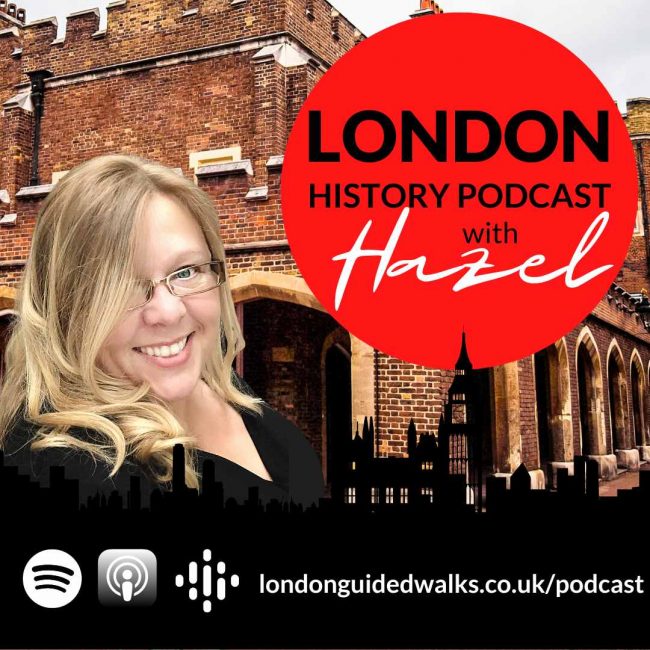Join us as we discuss London’s disused underground stations with London Transport Museum’s Siddy Holloway as she shares the hidden London underneath our feet.
London Guided Walks » Episode 31: Abandoned London Underground Stations
Episode 31: Abandoned London Underground Stations
Hidden London Virtual Tour
London Transport Museum’s new Hidden London virtual tours were launched in extraordinary times. Every ticket purchase helps support the future of the Museum.
£20 per ticket and £17.50 for concessions. To book a ticket, go to www.ltmuseum.co.uk/hidden-london
Recommended Reading:
Show Notes:
 Hazel: Hello and welcome to London Guided Walks London History podcast. In the coming episodes, we will be sharing our love and passion for London, its people, places and history in an espresso shot with a splash of personality. For those of you who don’t know me, I am Hazel Baker, founder of London Guided Walks, providing guided walks and private tours to Londoners and visitors alike.
Hazel: Hello and welcome to London Guided Walks London History podcast. In the coming episodes, we will be sharing our love and passion for London, its people, places and history in an espresso shot with a splash of personality. For those of you who don’t know me, I am Hazel Baker, founder of London Guided Walks, providing guided walks and private tours to Londoners and visitors alike.
Hazel Baker: Don’t forget to accompany this podcast. We also have great show notes, including pictures, and we also have a London history-related blog post for you to enjoy. Latest blog post include the Sad Past of Danson House, Lime Street’s Brief Moment of Catholicism, and also Walter Sickert.
We also have our 2nd podcast called The Daily London, providing you with daily inspiration Monday to Friday of things to do in London for Londoners. Yes, even in lockdown 2.0. You can listen to on all of the normal channels including our website, londonguidedwalks.co.uk/flash.
And as you know, the tours that we do, even the virtual ones, are all above ground. But what about the hidden London history beneath our feet? Joining me today is Siddy Holloway, Hidden London Engagement Manager at the London Transport Museum and is a historical expert on London’s disused stations.

Siddy Holloway
I´m the engagement manager for Hidden London by the London Transport Museum. Author, guide, actress and presenter and a voice over artist and the creator of the Hidden London tours.
Facebook | Instagram | Twitter | Website
Siddy Holloway: Yes, indeed. I mean, it’s such a fascinating subject and a lot of people get very excited when I tell them what I do, because it’s sort of, I don’t know, spooky and secret. And people are very fascinated by what lies beyond those closed doors that you’re not allowed to go through.
Hazel Baker: And how did you get into all of this?
Siddy Holloway: You know, it’s one of those things that is incredibly bizarre about the world. Isn’t it? It’s somehow, one thing led to another. So I, I’m originally from Iceland. I moved, I’ve lived in the UK for over 10 years now. I moved over to do a BA in acting in drama school. And when I was finishing drama school, I needed to find sort of a stage name. So Siddy is my actual name, but Holloway is my stage name. And I was trying to figure out how to, you know, get a good stage name and, finding a last name for yourself isn’t the easiest thing in the world. And Holloway came because I was on the Piccadilly line and I saw the next, you know, next stop was Holloway road. and I liked it so much that I decided to keep it as a name. And then fast forward a few years, and, I got a job with the London Transport Museum after having been a London walking guide for quite some time. I know it seems like we all start sort of, you know, the streets call us.
Hazel Baker: They must have –
Siddy Holloway: And yeah, they were setting up a new program called Hidden London at the time. And, it was kind of a very new concept and they asked me if I wanted to kind of lend my guiding expertise to the, to the project. And I, of course, was really thrilled to do that. And, we’ve grown from there.
Hazel Baker: Now I know the tickets to your Hidden London Tours, you know, they sell like hotcakes. And one of the silver linings, as opposed to lockdown 2.0 Is that you are offering virtual tours in places that we couldn’t necessarily get physical access to at normal times.
Siddy Holloway: Yeah. So, I mean, virtual tours came as an idea after. When lockdown happened, of course, we had to stop, you know, delivering at all our sites as did, you know, the entire world. And we all stayed at home. And, we decided to, we started this small thing called The Hidden London Hangouts, which is our YouTube series.
And really it was all just, it was just the four of us kind of chatting about some of our sites. And we just thought, you know, maybe a few people would watch it. But through doing that we sort of got to know zoom as, again, the world did. And we got to know sort of how, how brilliantly that format actually works and how you can interact with people. And so when we kind of came back to thinking about how to do something that would be engaging and exciting. We thought about doing virtual tours and we wanted it to be something kind of different. So we didn’t want to just convert our pre-existing tours into virtual ones. We wanted to offer something that we could never take people into any way due to, you know, site restrictions or, you know, the fact that, you know, some of them are simply like, you cannot bring people in there anymore.
And we happened to be very lucky to go in there a few years ago. So we just thought it’d be something completely different.
Hazel Baker: Yeah. I totally hear you. With our virtual tours, we’ve done the same. It’s a combination of imagery, but also video and pictures from the past and places that you could talk about, but not necessarily visit or see, and all of that coming together. Rather than it being just a presentation via zoom. And people really appreciate that extra effort, don’t they?
Siddy Holloway: Yeah, it’s been an amazing success because people are sort of hungry for, to do something different. And, and you know, these places, as I said before, they have this kind of pool about them. You know, people are, especially if you, if there are any remnants of it on the surface, when people walk past. And many people have often wondered for maybe years, you know, what is that building? And it looks like a tube station, but it’s not open. What is it? And what did it do? And so the virtual tours have been such a brilliant project and I’m really proud of how it’s come kind of how it’s progressing.
Hazel Baker: Holborn is a huge station and the tour is 90 minutes. So how do you cram it all in? What do people get to experience?
Siddy Holloway: It’s interesting you say that because Holborn, It’s kind of an interesting site and, and really, I mean, we decided to name it Holborn Kingsway. But really what we’re doing in the tour is we’re actually going to three different sites.
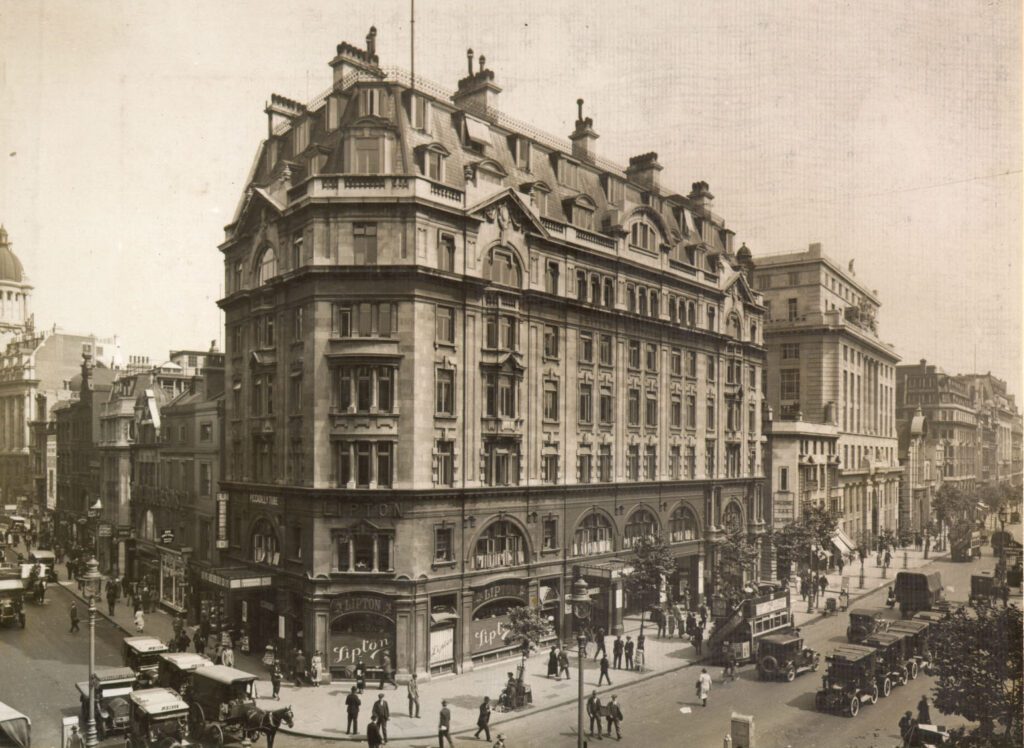
What we’re really trying to encapsulate is that entire area that got regenerated at the turn of the 20th century, by the London County Council. So we’re sort of including the Kingsway tram tunnel. We’re including Holborn station, particularly platforms five and six, which are of course disused today. And then we’re going to sort of take people down the tunnel all the way to Aldwych and talk about how Aldwych was potentially going to be extended and kind of linked to Waterloo in the 60s, but that never happened. So we’re traveling far and wide. That’s going to be a smack full tour of all these goodies that people have never seen before.
Hazel Baker: So you’ve done all the dirty work for us then. We don’t have to get grumpy. Like I imagine you did.
Siddy Holloway: Oh God. Yeah. I mean, I feel like, you know, I feel like my skin breaks out now, if I don’t have dust on it or, sort of like where’s all my, you know, where’s all the kind of brake dust I need it. Yeah, we’ve done it all for you. So it’s just brilliant to be able to bring something that people are loving and that people are joining from all over the world too. But, you know, having Londoners kind of interacting with one another and sharing stories sometimes, which is, I think is such a lovely thing. You know, people kind of join the tours and say, Oh, you know, I was there and you know, this year and I saw that or to travel through there and I can’t believe it’s closed now. And so, it’s been, it’s been really a really great experience.
Hazel Baker: And what’s the relationship between, the British Museum and Holborn Station? Is there a secret tunnel?
Siddy Holloway: I mean, the site used to obviously be part of British Museum station, because of course that was the station, all the central line before the two kind of merged together in the 1930s. So Holborn used to only be a station for the Piccadilly line and British museum was kind of across the street very far away from the actual British Museum.
I said, it’s got to be said, there’s the station was nowhere near it, really. and, so the two weren’t linked and then they were linked together in, in the 1930s. And, The, the central line has started sort of be kind of reconfigured for that, but for there to be a secret tunnel between the two. unfortunately I’m not seeing any remnants of that, but you know, you never know there could be something there’s a lot on under the ground in London that we are still just discovering.
Hazel Baker: Yeah. Very true. Erode is a, another venue that you’re focusing on for the virtual tools. What peaked your interested to deliver that one? I don’t know very much about it.
Siddy Holloway: Oh Brompton road, honestly. It’s that along with the other tour that we do, which is King William street is on, is really known in the transport geek world as the Holy grail of disused stations, because it is a reason why it’s so kind of why it’s such an urban legend, so to speak is because you can’t actually access it from the surface.
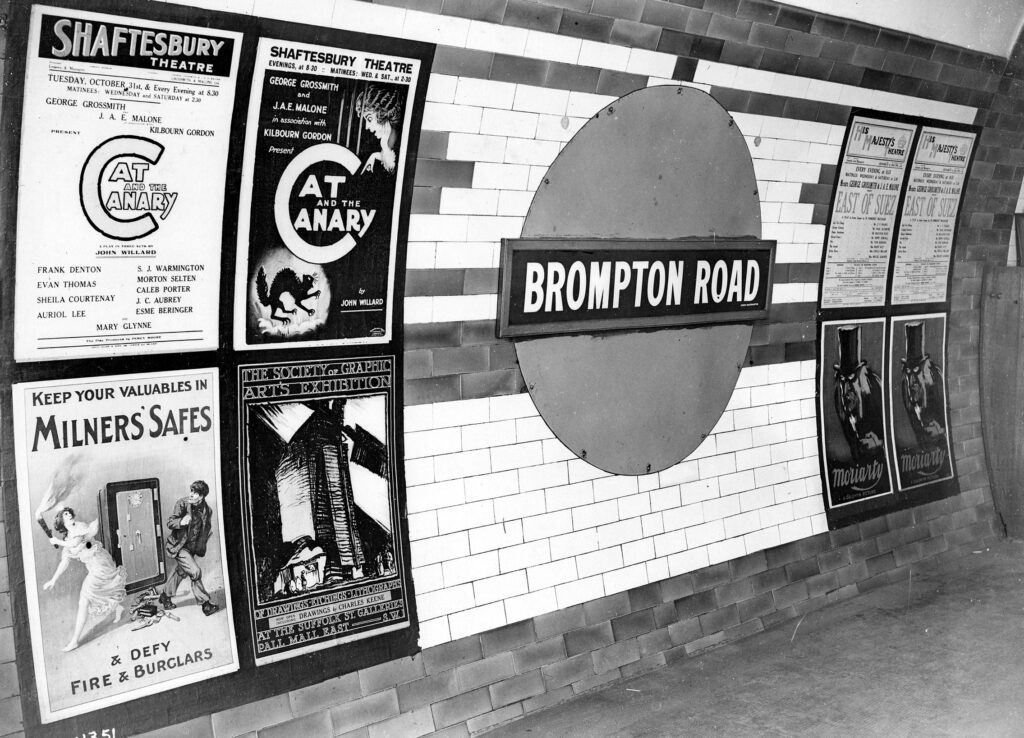
You have to go there by the tunnels. And the way you do that, the only way really to access Brompton road is to board a Piccadilly line train with the driver and the driver’s cab, and then D train in the middle of the, of the tunnel. And, you know, the only way you can do that as to a board, an actual passenger train.
So it’s, it feels like the most James Bond secret thing you’ll ever do in your life. and that’s also the reason why we’ll never be able to do tours that, you know, physical tours, because you can only fit like, three people in a drivers. Brompton road is a really amazing site. And the reason why it’s not accessible, I’ll get to in a second.
So, it was on the Piccadilly line. It’s between Knightsbridge and South Kensington. Hence the name Brompton road. It was a fairly beautiful station. It used to be, was set right on Brompton road itself. and it was kind of those typical Lesley green kind of oxblood tiles and, you know, the lovely, acamphosis leaf design inside the, inside the, the ticket hall, but being located where it was in a very affluent part of London with its two neighbouring station being.
Well better located really for anything that you would be kind of seeking in that area? it never really gained kind of a lot of customer, so it very quickly after opening in 1906, it just sort of started to dwindle. There were a few stations on the, on the Piccadilly line that really never kind of, never picked up much traffic. So by the 1930s, when Knightsbridge its neighbouring station was, was getting a new escalator fitted in or eat well it’s first escalate because of course it was operated with a lift before, it moved to the entrance of Knightsbridge station sort of closer sort of down towards Harrods and so closer towards Brompton road.
And that just meant that the station was made redundant. It really just wasn’t used. So they closed it on 31st of July, 1934, and it kind of quickly became sort of forgotten that isn’t till the second world war, the station was bought by the war department to become the headquarters for the first division of the anti-aircraft department of the territorial army.
So basically all of the ARP defences for London and sort of the Southeast were coordinated from Brompton road, tube station during the second world war. So it’s a fascinating place. And most of the remnants of that are still in situ on the platforms. When you go and visit, even the lift shafts were converted into four situation rooms, all of which you’ve still got maps on the wall.
Paint is still there. Some of the equipment’s still there. So it’s, it’s honestly like stepping into a movie set or something. It just, it feels completely. Ridiculous, that it’s still there after all these years. And it’s real, you know? But the reason why you can’t access it from the surface, because the surface level building was sold by the ministry of defence in 2014.
So it’s actually a, it’s been capped off completely as is. It’s going to be converted into, I believe a block of flat, but there’s some, some delay in that construction project. So the only way to access this insane, amazing, incredible. It’s pocket of history in central London is via a driver’s cab on the Piccadilly line.
Or if you’re really keen as, as we’ve done a couple of times, you show up at a Knightsbridge station at 1:00 AM in the morning, after all the electricity goes off the, the rails down which we have done. And we’ve, we stayed there when we were filming for the virtual tour. we stayed there until 5:00 AM shooting and we had to, of course, we had a member of staff with us who, you know, from London underground, who was there kind of supervising and making sure we were okay.
And he was kind of going, right guys, if you don’t go out of here in the next 30 minutes, they’re going to switch to on and you’re going to be in trouble. So we just couldn’t believe it. Cause it just, you know, I went there for the first time back in 2017, but some of the parts of the station back then were actually still locked up.
So the lift shots, for example, weren’t accessible. But when we went this time, everything was open. So it was just like, we were like kids in a candy store and we, we record all of this incredible footage. And it’s the first time this stuff has ever been shown. I mean, I had never even seen photos of some of these sites, especially like the, you know, the spiral staircase, all of the witness marks.
I’d never, you know, we’d never seen any of it. There are no historical photos that exist of it. So it’s just been like, It’s been a dream has it’s been an absolute, it’s just, it’s honestly, it’s been just what a treat for us also that we had this impetus to create this virtual tour and in doing so we’ve just preserved so much valuable information for the, you know, that’s also something that you always think about is, you know, what are we. What are we gathering? What are we bringing to the collection? You know, what kind of stuff are we actually preserving for the future for future generations? So it’s been great. I say Brompton road is an absolute must, especially if you’re, you know, if you’re a bit of a second world war kind of enthusiast or, you know, anything to do with secret, secret bunkers or anything like that.
Hazel Baker: It really hits the spot. At least it does for me while you’re waiting for the next virtual tour with city, then perhaps you’d like to listen to Episode 7: True London Spy Stories with Rob Smith, for telling stories of a world war two and a little bit of James Bond thrown in.
Excellent. And, and then what about, King William street? Can William street is, well, if Brompton road is in the Holy grail, then King William street certainly is so King William street is the first disused tube station or deep tube station.
Siddy Holloway: I should add in London. It was the Terminus of the first deep tube in London that was ever built, which was called the city in South London Railway which reached from Stockwell in the South of London up to King William street in the city of London, which is right next to the monument. And, this, this line opened in 1890. And as I said was the first sort of tunnelled deep tube in the world. And one of the first electric railways in the country after I believe the Brighton.
Peer rail, which wasn’t quite the same, but it wasn’t electric railway. and you know, it was a complete pioneer. It was, it changed, it changed the game, so to speak and, King William street was the Terminus, the city Terminus for this line. And you might be thinking of where is this line today? it’s a part it’s of course a part of the Northern line.
It was, so it was the Terminus. It was the sort of end point. And it only survived for under 10 years. So it only opened in 1890, but closed in February of 1900. And the reason was is that the station was just simply poorly conceived. Well, not poorly constructed, but it was in a very inconvenient place because of course this was the first time anyone had ever done anything like it, they didn’t really know what they were, you know?
What they were facing or how it would all work. And particularly at the time, electric traction was such a new concept that, you know, they weren’t really sure if there were particular inclines that would be too much for those early locomotives or if, you know, all sorts of engineering problems essentially started presenting themselves as soon as they opened.
And so when the proposal to extend the line came in sort of late, in the late 1890s, they decided that the most cost effective way to extend the line would actually be to bypass King William Street. That’s straight from Borough up to London, the bridge, and then to bank and leave that little kind of branch of King William Street just as it was. We go over why they did that and what the engineering problems were and, and why they kind of had all of these difficulties, and I mean, we actually show people in place why it’s it. It was an impossible station to do anything with really, so yeah, they left it in 1900.
And then after that, you know? Yeah. So say it’s 120 years since it closed, let alone opened closed. So it’s this gorgeous kind of remnant of this old Victorian deep, underground architecture that really don’t see in many places anymore. and, and it’s also doing, you know, it’s had a few jobs since its original one was since he got sacked from its original one. Every time I’ve been there, I’m always just like, Oh my God, leave. This is still here. Cause it’s just, it feels like industrial archaeology, you know, going into these places. Really feels like touching the history of the recent past, but that shouldn’t really exist anymore because everything gets wiped away for the new these days. So something like that surviving still is just incredibly exciting.
Hazel Baker: Well, your, your excitement is infectious. I’m sitting here with goose bumps, trying to work out which of the virtual tours I can get on first.
Siddy Holloway: Really? You should come on. All of them, Hazel, I think, I think I’ll, I think I might have to. I just want to know more when I just cannot wait to get that cup of tea and join you online.
Hazel Baker: It’s real fun. I would say it’s, it’s mostly just fun and it’s fun to kind of explore these places together. Well, thank you so much, Siddy, for joining us today. I just can’t wait. Now I’m excited, but it’s been an absolute pleasure having you on today. So thank you so much for joining us. Oh, thank you so much for having me.
Siddy Holloway: I can’t wait to, you know, get you on a tour and show you some of the secret stuff.
Hazel Baker: That’s all we’ve got time for now, but thanks very much for joining us. And if you’ve enjoyed it, then please do leave a review. It’s lovely to hear all of your lovely comments and all the information you need for the head and London book, or to get your place on a virtual tour with city.
And if you have any suggestions for future episodes, rather about a London, London place or a particular time in history, then please do let me know, get in touch by Facebook, Instagram, Twitter, the old fashioned email works still even now, send us your requests and I’ll do my best.

